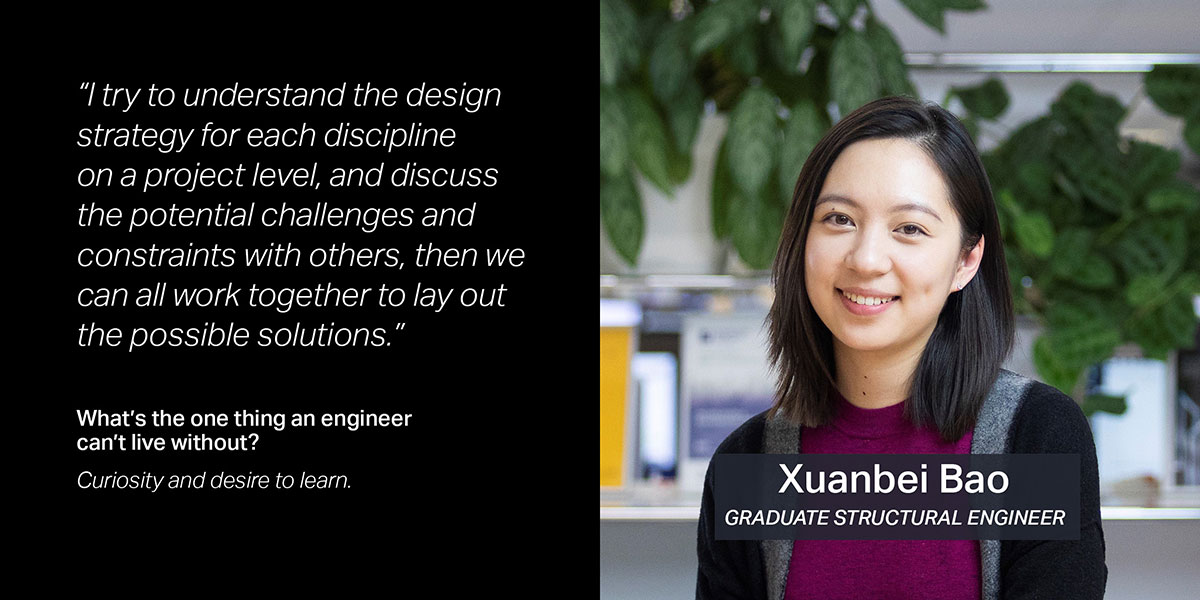#{Title}
#{Copy}
This week we’re celebrating Tomorrow’s Engineers Week and, as ever, we want to inspire as many young people as possible to consider this creative, exciting and rewarding profession as a career path. Over the coming days, we’ll be chatting with some of our youngest talent across the business – all of whom are in the early stages of their careers as engineers.
Meet Xuanbei Bao, a graduate structural engineer who joined us two years ago after graduating from the University of Bristol.

Was it was always your goal to become an engineer?
I remember when I was about five years old, dreaming that I wanted to build a big house when I grew up. Never did I think I would end up being a structural engineer when I was that young, but I am now building big houses as my job, and can say it is a dream come true.
What are you working on at the moment?
I have been working on a project to transform and modernise critical care and assessment buildings and services at Musgrove Park Hospital in Taunton. My role as a design engineer on this project, is to assist the senior engineers and liaise with other professions in the design team to produce a feasible structural design. This involves doing calculations, sketches, and drawings, and I have also been liaising with the contractor to resolve site queries.
Are there any projects you’ve seen that you wish you had worked on?
Queen Mary University Graduate Centre would definitely be on my list, the exterior V shape columns of the building are striking and iconic.
How do you collaborate with other professionals in the industry? Do you have your own strategy?
Collaborating with other professionals means understanding the expectations and requirements of each party, not only within the design team, but also from clients/end users. I try to understand the design strategy for each profession on a project level, and discuss the potential challenges and constraints with others, then we can all work together to lay out the possible solutions.
What does creativity mean for you, and how do you apply this to your day job?
Every single project has its own complexity, and even similar details will vary from project to project. Creativity is one of the fundamentals of structural engineering and we, structural engineers, will always need to come up with creative solutions to overcome the changes and challenges in different scenarios.
What’s been your best day in the job?
I would say it was the day I went to Heatherwood Hospital site. With limited two years of experience in the industry, and quite a few hours spent in the office doing the calculations for this project, it was the first time I ever saw my design being built. It was surreal but amazing.
Thinking back to your school days, if you knew then what you know now, would you still choose this career path?
There is no doubt that I would still choose to be a structural engineer. I won’t deny it is hard work, but I very much enjoy solving complex real-life problems, from which I feel really fulfilled. I really appreciate the fact that I am actually having fun in my job, which is not something that everyone has the privilege of.
What’s the one thing an engineer can’t live without?
Curiosity and a desire to learn.